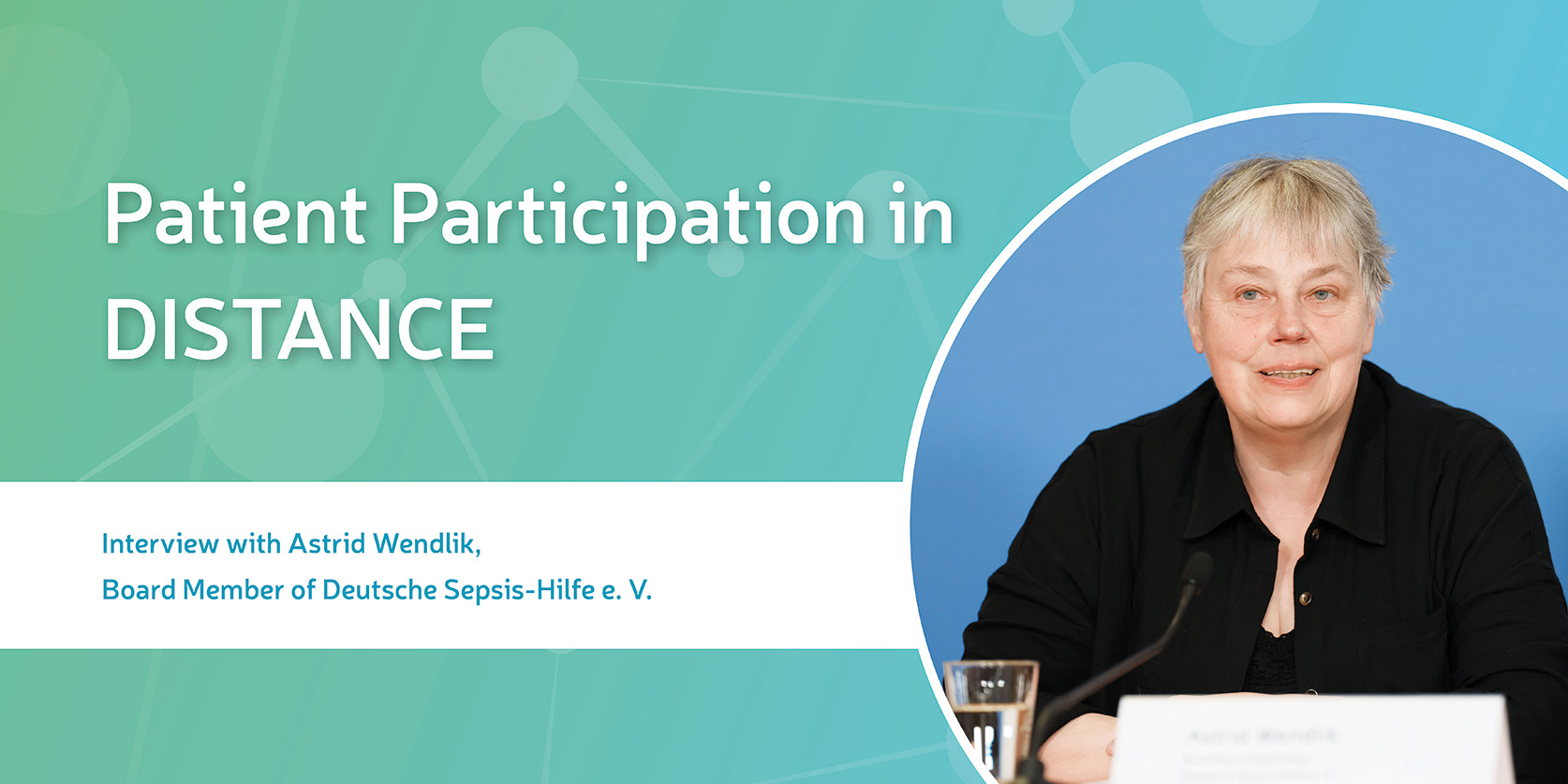
Patient Participation in DISTANCE: How Deutsche Sepsis-Hilfe e. V. Supports Digital Intensive Care Aftercare
To ensure that the technical solutions and infrastructures developed in the Medical Informatics Initiative (MII) benefit patients in the best possible way, their active involvement in MII projects is essential. The Digital Hub DISTANCE is setting a good example by involving the German Sepsis Help (Deutsche Sepsis-Hilfe e. V., DSH) as a patient organization in the project. Members of DSH have tested the PICOS App, which was developed as part of DISTANCE. The PICOS App accompanies patients in their aftercare after a stay in the intensive care unit. Since sepsis, a misdirected immune response of the body, often leads to organ failure and thus intensive medical treatment, the DSH has the necessary expertise to advise DISTANCE on the usability of the PICOS App. In this interview, Astrid Wendlik, DSH board member and family member of a sepsis patient, talks about her experience with DISTANCE and her wish for more patient involvement in MII.
Ms. Wendlik, what motivated you to participate in DISTANCE?
I see DISTANCE as a great opportunity: the app makes it possible to collect data for research while allowing patients to track their progress. It’s a win-win situation for both science and patients. The app also creates knowledge and acceptance for the voluntary provision of health data for research.
How are you and Deutsche Sepsis-Hilfe e. V. involved in the work of DISTANCE?
We have been using the PICOS App for several months, testing it for its practicality and providing feedback. We also have many years of very personal contact with patients who suffer from the consequences of their stay in the intensive care unit. This personal contact makes it easier to convince them to participate in DISTANCE on a long-term basis. In addition, we are currently establishing contacts with social services in hospitals – the project could be usefully integrated here as well.
Why is digitalization important in the diagnosis and treatment of sepsis?
Digital solutions, such as the electronic health record or the PICOS App, allow clinicians to view past interventions, progress and current health status at a glance. This facilitates coordination and can speed up treatment. It also helps make successful treatments visible and serve as a benchmark for other patients. When all data is available centrally, better diagnoses can speed up treatment.
What are the challenges of digitalization?
A major challenge on the patient side is the ongoing maintenance of data in healthcare applications. It is therefore important that doctors regularly remind patients of this and emphasize the added value of these applications for the patient. It is also important to educate patients about what data is really relevant, for example for the progression of sepsis.
What benefits do you see in the PICOS App?
The PICOS App provides a good summary of the current state of health. All important information is available in one place. The primary care physician also has an overview of the development of values over a longer period of time. In addition, patients can use the app to actively participate in health research without any additional effort.
What suggestions do you have for improvement?
Some questions in the app should be asked in simpler language. There is also room for improvement in terms of accessibility. In addition, the apps do not run on senior mobile phones, which unfortunately excludes older people from the study. More transparent information about the added value of the app and the use of the data for research would increase patient tolerance of the PICOS App.
What would you like to see for patient participation in the MII in the future?
I would like to see simpler language, more transparency about the background of data use for research, and more interaction with patients. Digital checklists on mobile phones could make follow-up easier for older people.
Overall, I would like to see more information from all sides about the collection of patient data for research purposes, e.g. through flyers, websites, but also from hospital staff. Everyone wants research, but many patients don’t realize that they need data to do it.

